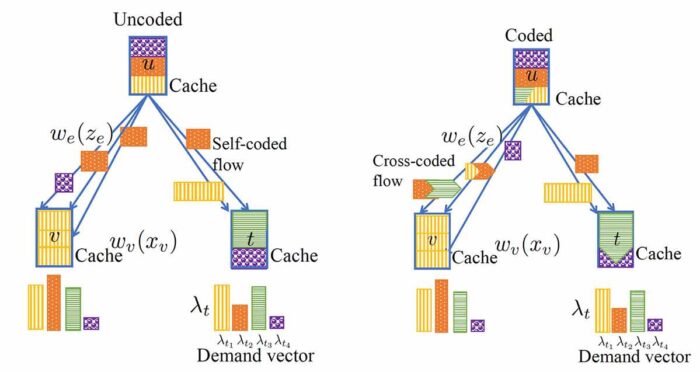Yuanyuan Li
Ph.D. Student

Caching, a technique for storing data closer to users, has proven instrumental in easing network backhaul congestion. However, determining the best placement of files in caches to maximize cache hit rates is computationally challenging. To address this, researchers have explored various approximation algorithms. More recently, joint optimization frameworks have emerged to balance caching with other network parameters. This work introduces an approach that leverages coding to enhance file transmission efficiency in both wired and wireless caching networks.
Coding, an innovative concept, relaxes the complexity of NP-hard solutions by transforming discrete optimization problems into continuous ones. This approach eliminates the need for complex rounding techniques. Additionally, by combining caching and cross-coding, users can decode files using fewer transmissions, leading to resource savings.
This paper explores various aspects, such as the benefits of uncoded caching, memory-bandwidth tradeoffs, and the interaction between cache and catalog sizes. Departing from earlier work, the researchers tackle asymmetric demand within arbitrary network topologies. This approach optimizes caching, delivery rates, and cross-coding across content.
This model introduces a flow-based coded caching network design considering delivery and caching costs. This system enables the storage and transmission of both coded and cross-coded content between network nodes. Due to asymmetric demand distribution, a combination of unicast and multicast transmissions is necessary. Each flow can be self-coded or cross-coded using network coding techniques during delivery. As a result of the model’s flexible cost function, it is possible to quantify the trade-off between transmission and caching costs.
We provide a flow-based coded caching framework for information centric networks. We jointly optimize delivery rates, cross coding, and cache contents allocation as a function of demand and the network’s topology. Our model accounts for stor-age and transmission costs, demand asymmetry, and arbitrary multi-hop topologies, and relies on an ordered flow-based de-coding schedule for the transmissions created by pairwise coded flows. Through extensive experiments over multiple topologies, we observe that our coded caching scheme reduces transmission costs over competitors by several orders of magnitude.
Index Terms—Coded caching, wireless, cross-coding, memory-bandwidth tradeoff, demand asymmetry, unicast, multicast.
Source: ece.northeastern.edu
Ph.D. Student
Associate Professor of Electrical and Computer Engineering
Professor of Electrical and Computer Engineering